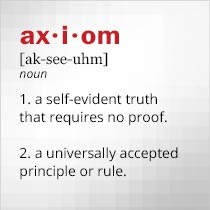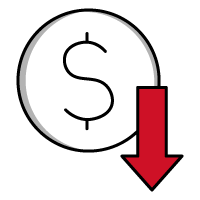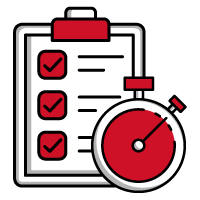Learn When an Analyzer Makes More Sense Than a Meter
July 05, 2022
.jpg) |
Electronic measurements can be quick and easy, like reading a voltage between two terminals. But they can also be complex, such as studying how voltage varies with load and temperature. Making those measurements may come down to a choice between a meter and an analyzer. Some test units like meters, are designed for speed and simplicity and to read a single electrical parameter, such as voltage, current, or power. Some test units are more elaborate and are called analyzers because they not only gauge the value of an electrical parameter, but they also enable full study of it. At one time, comparing a meter to an analyzer was like a voltmeter to a vector network analyzer—it was no contest. But both types of units have grown in power and sophistication and today’s comparisons require a bit more time and thought.
Meters and analyzers may appear remarkably similar at first, starting with the measurement of an electrical parameter such as voltage, current, or power. Both types of units work with probes, sensors, or test fixtures to determine the value of an electrical parameter for a device under test (DUT). The meter usually gives a quick measurement, often a “one-button test,” while the analyzer may require more programming and setup time. But the time invested up front can lead to more details about the test results, such as not just an AC or DC voltage but how it varies with time, temperature, frequency, and change of load. When such additional information about a measured electrical parameter is needed, the tendency is to reach for an analyzer rather than a meter.
Weighing the Differences
The first, noticeable difference between test meters and analyzers is in size: meters are often smaller than analyzers with simpler controls, while an analyzer may occupy several spaces in a rack-mount cabinet. The smaller size of modern test meters can be deceiving in terms of capability, however. A great deal of measurement power with high accuracy can be packed into an easy-to-use benchtop unit such as the Yokogawa WT310E digital power meter. It runs on standard AC power and is compact and rugged enough to be added to almost any test site. It offers the operating simplicity of a meter but the power measurement accuracy of an analyzer, at typically ±0.15%, and has been used for single-measurement scrutiny during R&D and quality assurance (QA) as well as the repetitive testing for production measurements.
The WT310E is a digital power meter and well suited for portable applications but it can also be used as part of an automatic-test-equipment (ATE) installation. It is equipped with several communications interfaces, including USB, GPIB, Ethernet, and RS-232C for connection to and control by an external computer. With the right probes and test software (often free), the WT310E can perform continuously and reliably within an ATE system. But it has only one measurement channel, so several WT310E meters may be required to carry the test workload of a much larger power analyzer, such as Yokogawa’s WT5000 series of multichannel power analyzers.
Each power analyzer in the WT5000 series is much larger than a model WT310E power meter but with much greater power measurement capability. The analyzers are based on a modular architecture, with modules plugged into a mainframe to add measurement channels and capabilities as needed. Each mainframe can hold as many as seven modules, with each module adding a measurement channel. In this case, the analyzer is larger and more complex than the meter, but with the capability to perform many more simultaneous power measurements than the power meter.
The modules that plug into the WT5000 series power analyzers provide guaranteed power measurement accuracy of ±0.03%. The analyzers and their modules add extensive built-in RF filtering and harmonic analysis capability to provide extended measurements of a power source, more than a basic power meter. Of course, the additional functionality also boosts the operating complexity, but the WT5000 power analyzers are designed to provide “meter-like” operating simplicity with a full touchscreen display and straightforward controls.
Often, a compact meter may lack the functionality and measurement capability of a larger analyzer, but not its performance. This is the case with the compact Boonton 4532 RF power meter compared to the more complex Boonton 4500B RF peak power analyzer. Both offer impressive measurement capabilities, depending upon attached sensor. The power meter provides two measurement channels with frequency range as wide as 50 MHz to 40 GHz and dynamic range as wide as 60 dB for measurements of RF CW power, RF peak power, and voltage without range switching and measurement glitches that can occur when changing measurement ranges. The power analyzer covers a frequency range of 1 MHz to 40 GHz with four measurement channels each capable of capturing individual pulses such as radar signals over a 70-dB dynamic range from -50 to +20 dBm and modulated signals over an 80-dB dynamic range from -60 to +20 dBm.
The power meter offers similar performance as the analyzer but one-half the measurement channels. Both the power meter and analyzer incorporate standard digital interfaces, such as RS-232 and GPIB, to connect to computers but the analyzer provides a bit more programming flexibility with user-defined measurement parameters. It features a time base that can be set from 5 ns/div to 1 h/div with 100-ps resolution to capture the most fleeting power events with precision and accuracy.
As with the Yokogawa power meter and analyzer, the Boonton power analyzer is more complex than the meter but with greater programming flexibility. The meter can make time-gated measurements relative to a trigger on a small screen or perform automatic measurements with a controlling computer and software and its much easier to see screen. The analyzer is designed as an “all-in-one” test solution, with an 8.4-in. liquid-crystal-display (LCD) touch screen and user-defined trigger to establish the capture region for power events. The analyzer includes automatic power-versus-time waveform analysis to ease the analysis of infrequent power peaks and digital modulation. For the Boonton 4500B analyzer, the software is in the unit and not on an external computer, with automatic pulse measurements that provide quick results for pulse width, rise time, fall time, and pulse repetition frequency (PRF).
The gap between measurement meters and analyzers is no longer so wide as to be obvious: many meters can hold their own with the same company’s analyzers in terms of measurement functionality and accuracy. Additional close meter-versus-analyzer comparisons include the Keysight E4980A (20 Hz to 2 MHz) LCR meter and the wider-bandwidth (20 Hz to 120 MHz) Keysight E4990A impedance analyzer and the Keithley 2450 SourceMeter semiconductor parameter meter and Keithely 4200A-SCS semiconductor parameter analyzer. In these cases, the meters provide precision while the analyzers provide versatility and volume. The requirements of a test application will usually determine whether a meter can provide optimum test results or if the greater capabilities of an analyzer are needed. Axiom Test Equipment can help you make the best choice of a meter or analyzer to get a particular measurement job done. Contact us today!
Back to BLOG








